UK Steam Tour, April 2011
By Peter Limper
| Day 6 Glasgow Carlisle Preston (220 miles) |
| The passengers were provided with an information book for the tour which included detailed daily schedules such as this for Day 6. Unlike most US excursions, main line steam trips in the UK are timed to the minute, and need to keep their schedules since many operate on routes with heavy passenger traffic.
Note that our 4-6-0 was allowed a maximum speed of 75 MPH. Although the average speed for the trip was much lower, GPS readings by a fellow passenger indicated that we did meet or exceed the permitted maximum at a few points -- quite impressive for a locomotive originally built in 1927! |
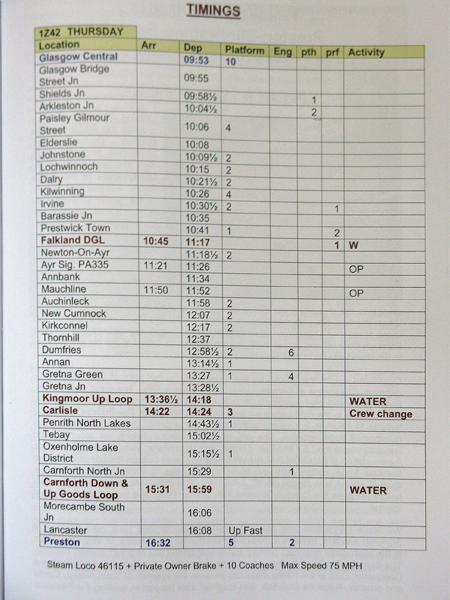 |
| Our faithful diesel is shown bringing the cars of our train into Glasgow Central for the trip to Preston. Royal Scott class 4-6-0 46115, Scotts Guardsman, returned to pull our train again. |
| The cream and maroon car is part of a suburban train set; behind it are high-speed train sets belonging to the Virgin rail group. We met several more high-speed electric trains on the busy line from Glasgow to the South. |
 |
| After leaving Glasgow we passed a British style unit coal train; “EWS” stands for “English, Welch, and Scottish. |
| At another location, we passed these freight diesels. |
| I was told that this train, with two locomotives bracketing a single flatcar, was hauling nuclear waste. |
| Our route to the south led us past many green fields with grazing sheep. |
| These murals showing steam locomotives are on the wall of the station at Carlisle, near the Scottish-English border. |
| In mid-afternoon we arrived at the station at Preston, our next over-night stopping point. |
| Day 7 Preston Bristol (203 miles) |
| Early on the seventh morning of our trip, the sign in Preston station announced our "charter train," departing for Bristol at 8:43. |
 |
| Our locomotive on this day was former Great Western Railway “Castle Class” 4-6-0 #5029, “Nunney Castle,” built in 1934. |
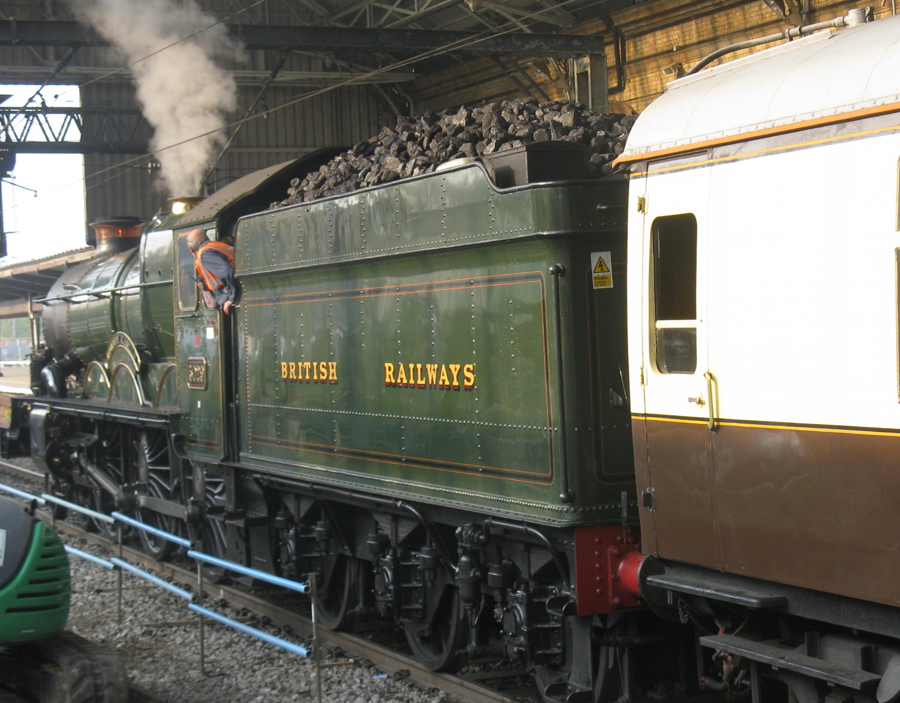 |
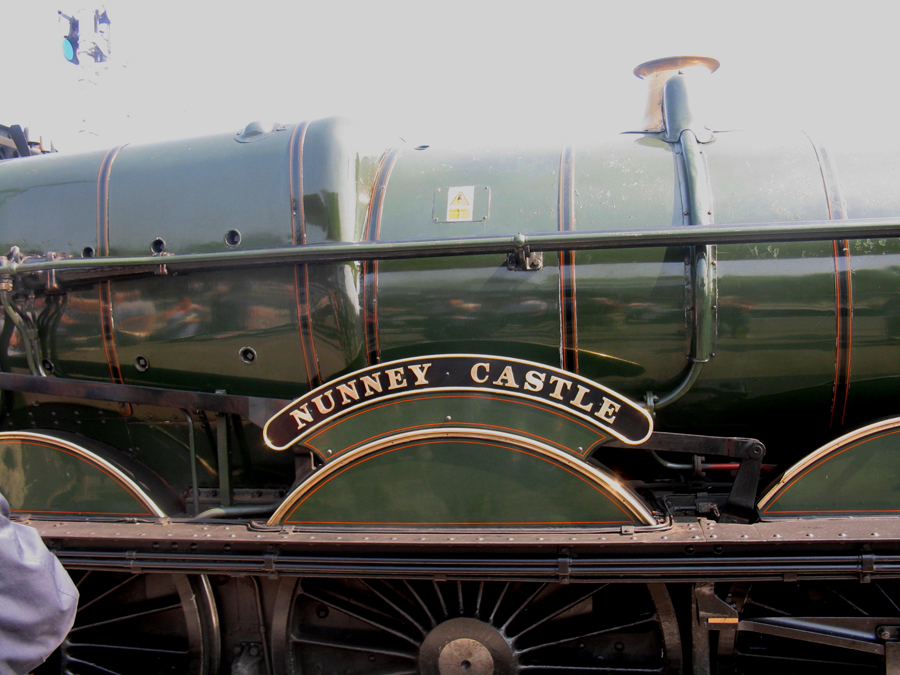 |
| Although carrying British Railways lettering on the tender, 5029 was decorated in traditional Great Western livery, including the distinctive brass chimney cap and safety-valve cover. |
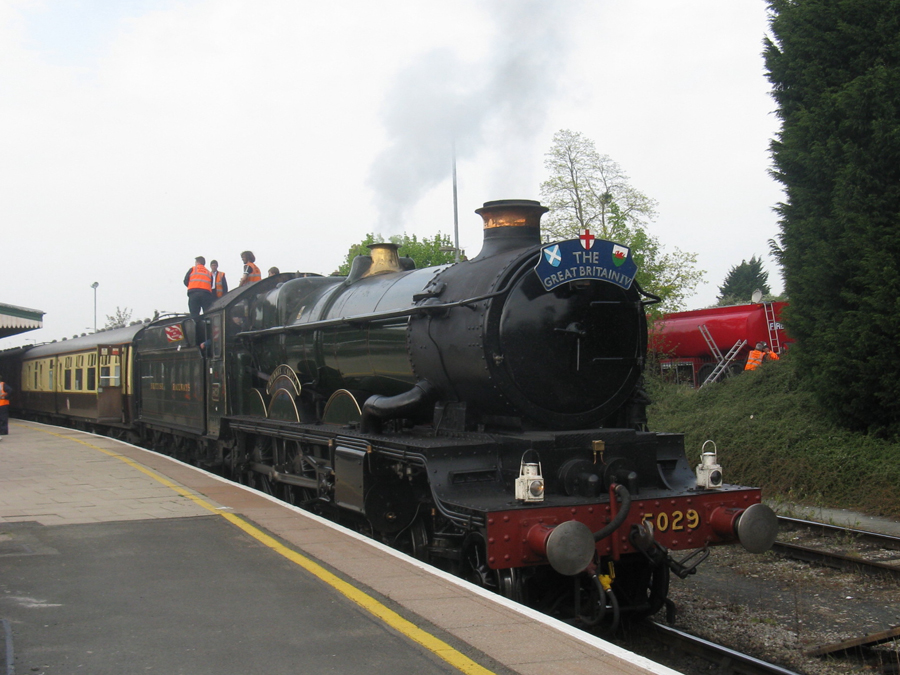 |
| Like many Great Western passenger engines, 5029 has four cylinders; these views show the valve covers for the inside cylinders at the front of the engine, and the set-back location of the outside cylinders. |
| Handsomely proportioned 5029 had a sharp exhaust bark and characteristic high-pitched whistle. Many British rail fans are particularly fond of Great Western engines; I quickly became one of them. |
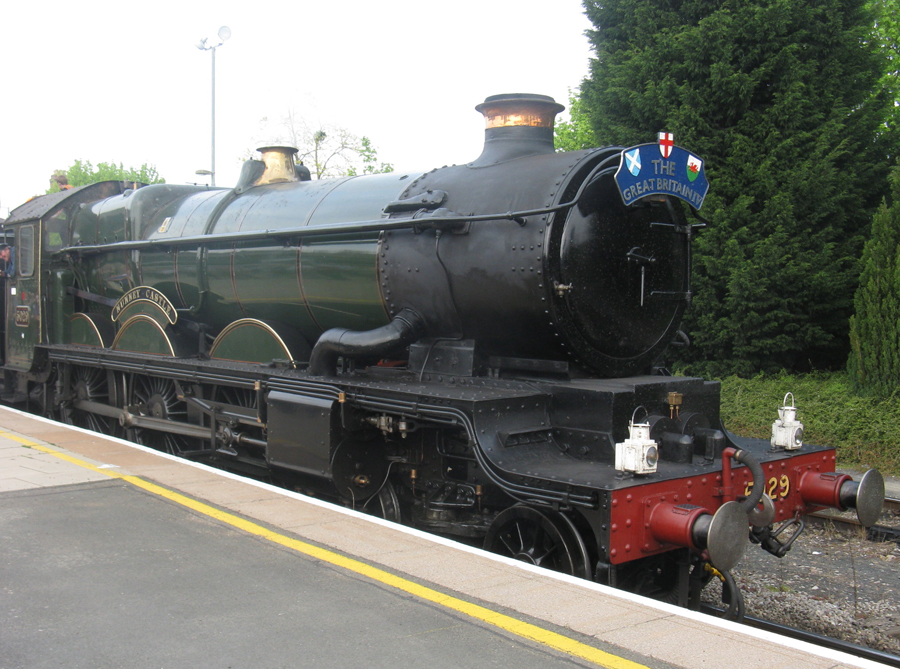 |
| The support van than accompanied 5029 was decorated in the GW passenger livery of tan and cream. |
| Though British built, these older freight diesels had an almost “American” look; we saw a variety of other diesels on this day’s trip. | ||
| These two young ladies posing on 5029 at a station stop gave a whole new meaning to the phrase "railway models." |
| The lassies in their mini-kilts were apparently part of the train staff; when not posing they sold souvenirs and provided passenger information. | ||
|
| Souvenir bears were popular both as passengers and temporary members of the engine crew. |
| Never let it be said that all rail fans lack a sense of humor about themselves. |
| The station approach at Hereford, near the English-Welch border, was controlled by this brick signal box; railfans waited on the bridge above for our train to depart. |
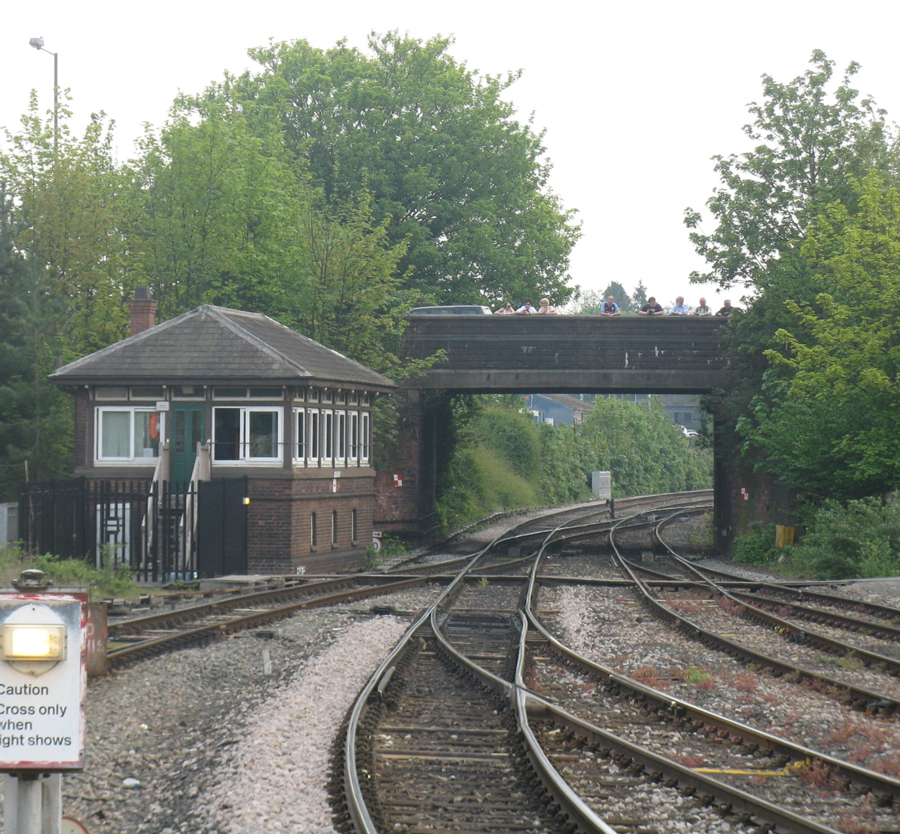 |
| The impressive station at Bristol Temple Meads; we would spend two nights in Bristol. |
| On the eighth day, our train from Bristol to Penzance was pulled by two locomotives: Pacific 70013 “Oliver Cromwell” was led (“piloted is the British term) by yet another Black Five, 45305. |
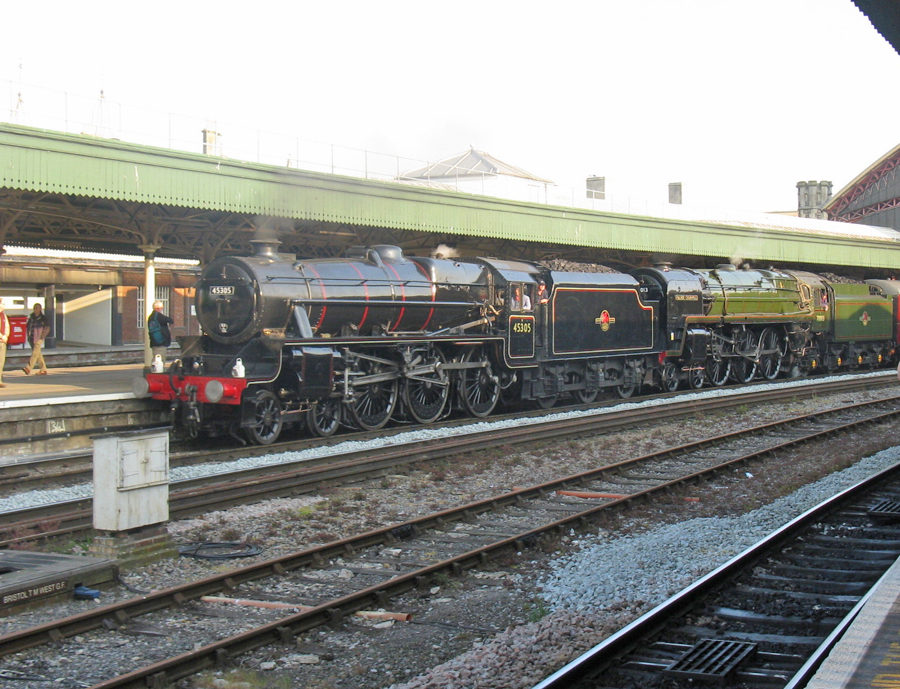 |
 |
| “Oliver Cromwell” was one of a group of 55 engines built in 1951-53. Dubbed “BR Standard Class 7P,” they were intended to be the new standard heavy passenger locomotives of nationalized British Railways. |
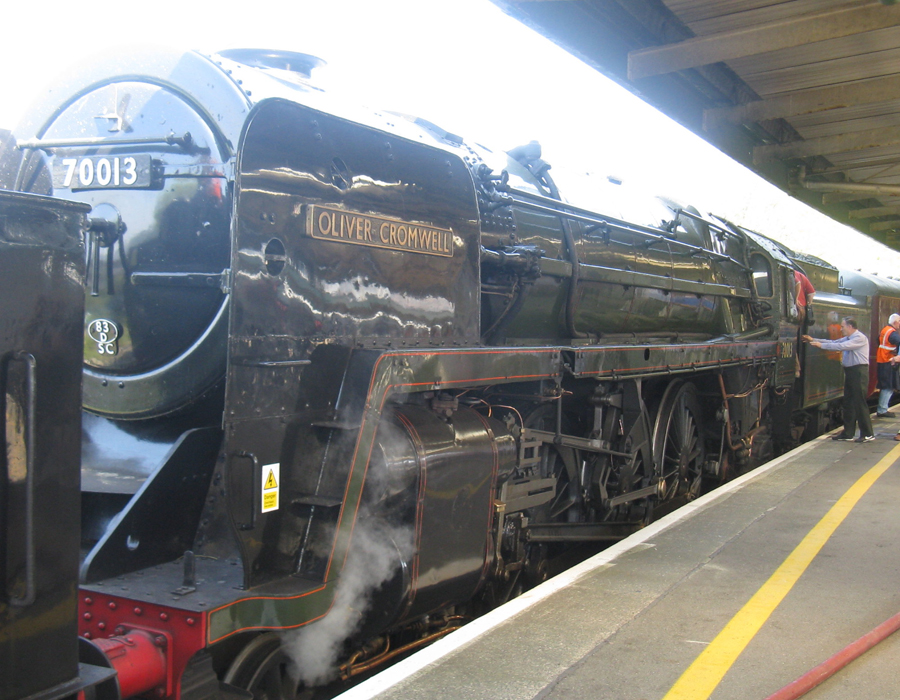 |
| The Class 7P’s looked more like modern American steam locomotives than the others that pulled our train; with a different pilot and headlight (and a larger tender) 70013 might not have seemed out of place on an Eastern US railroad such as the D&H or the NYC. |
| Like their post-war American counterparts, the 7Ps had their careers cut short by dieselization; Oliver Cromwell pulled the last regular steam passenger train in Britain in August 1968. |
 |
| Our train is seen standing at the platform at Bristol ready for departure; soon passengers were leaning out to catch a glimpse of the two locomotives. |
| The fields of the English West Country were a brilliant April green; at Teignmouth, a popular holiday resort, the line ran next to an estuary leading to the English Channel. |
| The train stopped for an hour at the historic port city of Plymouth, on the English Channel. |
| Cab views of 45305 and 70013 at Plymouth. |
 |
| The lassies posed again on 70013; not to be outdone I attempted an engine-drivers pose in the cab of 45305, though I lacked the traditional leather cap. |
| After leaving Plymouth we crossed the Royal Albert Bridge, designed by famous 19th Century engineer Isambard Kingdom Brunel, the builder of the original Great Western Railway main line. | ||
|
||
| Another view of the bridge from the opposite side, taken on the return trip. | ||
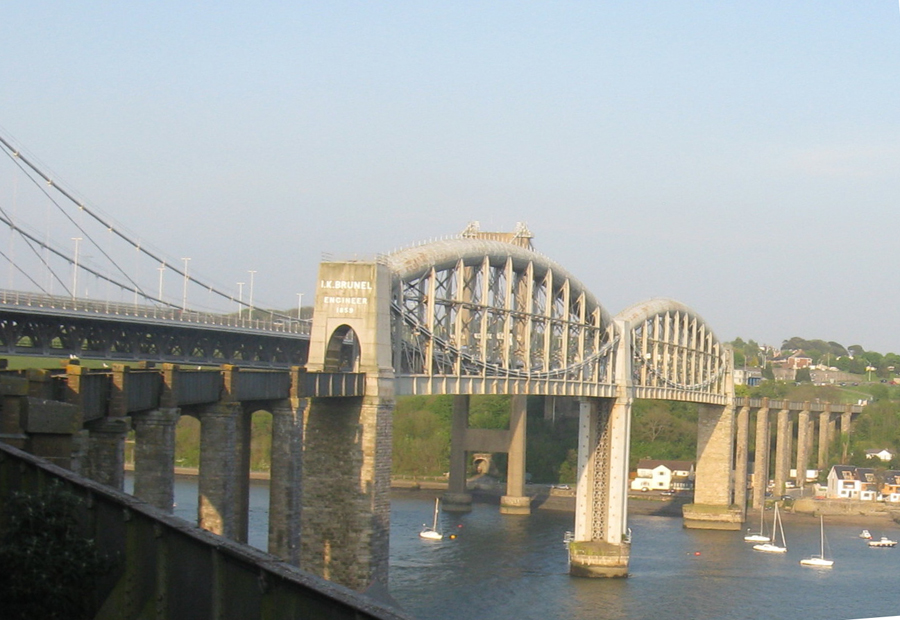 |
| In mid-afternoon we arrived at Penzance near the western tip of Cornwall, the southwestern-most station on British railways. Earlier in the week we had been to the northeastern-most station at Wick in Scotland. |
| The REAL "Pirates of Penzance" posed in the cab of Oliver Cromwell. |
| St. Michael's Mount, a well-known landmark in the bay at Penzance. |
| At Penzance we said farewell to the two steamers, and returned to Bristol with diesel power, arriving at about 10 PM. |
| Day 9 Bristol London Paddington (131 miles) |
| On the last day, our train was again pulled by Nunney Castle on the four hour trip from Bristol to London. |
 |
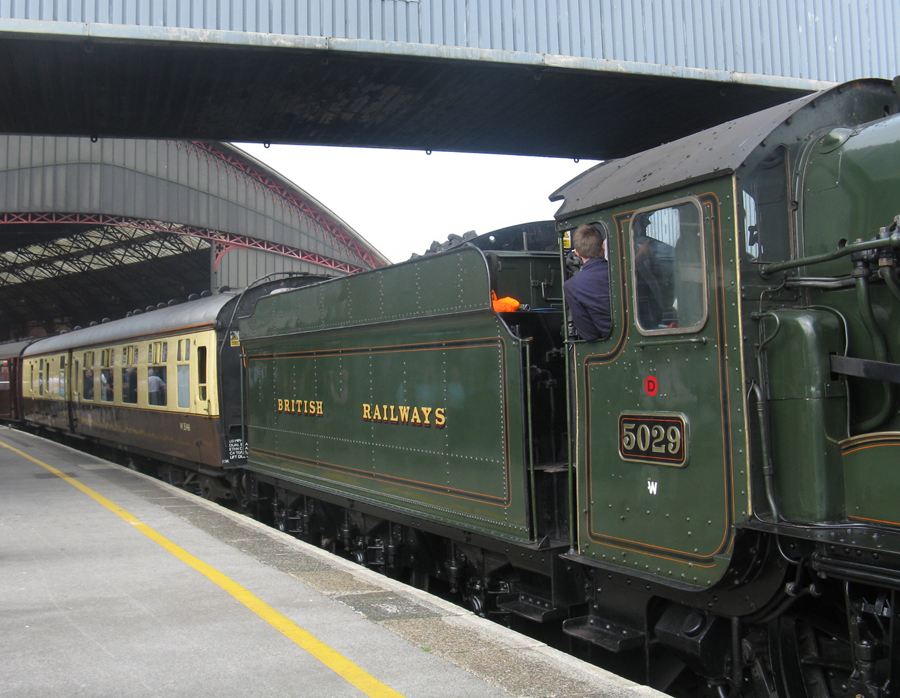 |
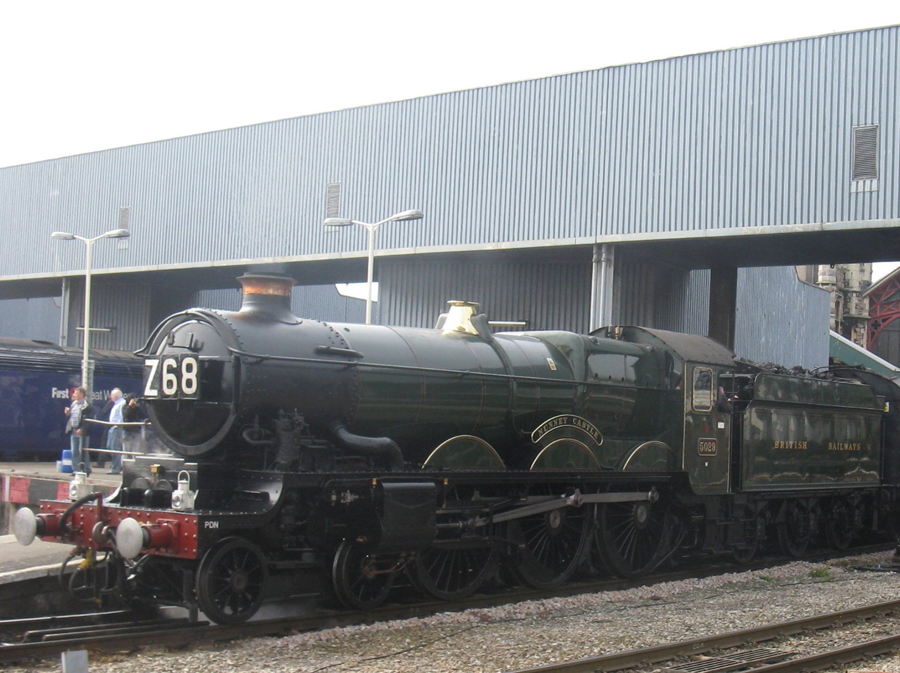 |
| Nunney Castle prepared to leave Bristol, together with a modern high-speed train; the large front numbers would have been typical in British Railway days. |
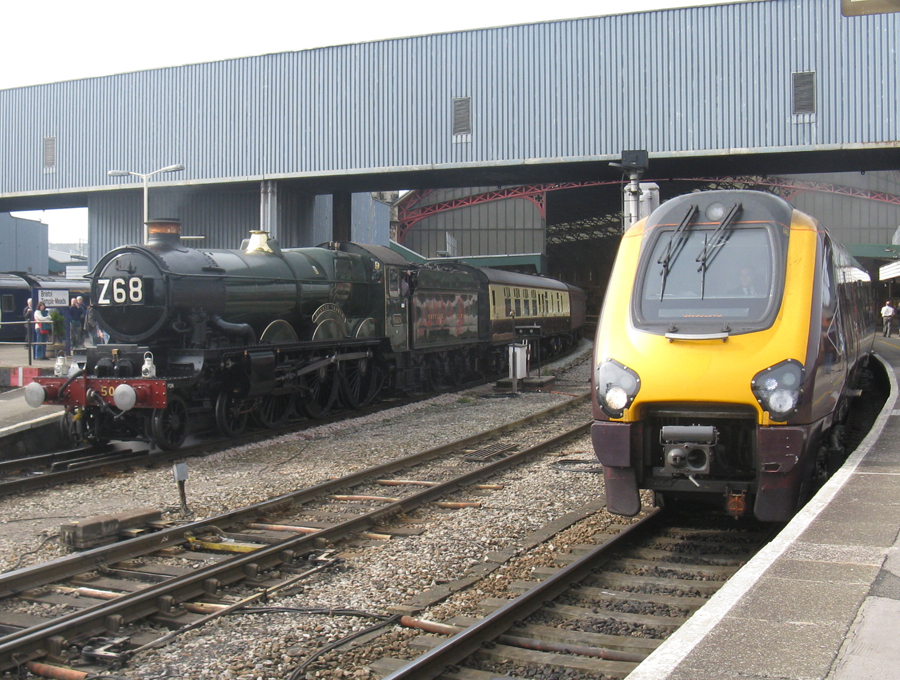 |
| Nunney Castle is pictured in Paddington Station (the original London terminus of the Great Western Railway) at the end of our nine day journey, during which we traveled 2172 miles by rail. |
 |
 |
This page was designed and is maintained by Mike Condren.
If you have materials
that you would like to contribute, contact me at mcondren@cbu.edu



